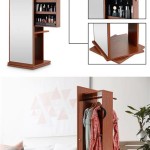How Do I Mirror My iPhone to Mac Catalina?
Mirroring an iPhone screen to a Mac running macOS Catalina offers a convenient way to share content, demonstrate apps, or record tutorials. Several methods facilitate this functionality, each with its own advantages and limitations. Selecting the appropriate method depends on the user's specific needs and available software.
Using QuickTime Player
QuickTime Player, a pre-installed application on macOS Catalina, provides a straightforward screen mirroring solution. This method requires a USB cable connection between the iPhone and the Mac. It's ideal for situations demanding low latency and high-quality mirroring, such as recording device demonstrations.
To mirror using QuickTime Player:
- Connect the iPhone to the Mac using a USB cable.
- Open QuickTime Player.
- Go to File > New Movie Recording.
- Click the dropdown arrow next to the record button.
- Select the iPhone as the camera and microphone source.
- The iPhone's screen will then be displayed in the QuickTime Player window.
Utilizing the Reflector 3 Software
Reflector 3 is a third-party wireless mirroring application that offers more flexibility than QuickTime Player. It allows for mirroring without a physical cable connection, leveraging AirPlay technology. Reflector 3 also supports mirroring from multiple devices simultaneously, making it suitable for presentations and collaborative work. The software requires a one-time purchase and offers a free trial period.
To mirror using Reflector 3:
- Download and install Reflector 3 on the Mac.
- Open Reflector 3.
- On the iPhone, open the Control Center.
- Tap the "Screen Mirroring" button.
- Select the Mac running Reflector 3 from the list of available devices.
Taking Advantage of AirPlay 2 Compatible Smart TVs (Indirect Method)
While not direct mirroring to macOS Catalina, using an AirPlay 2 compatible smart TV can offer a workaround for sharing iPhone content on a larger display easily accessible from a Mac. This method is suitable when mirroring to a Mac is not strictly required and the primary goal is sharing content with a larger audience. It necessitates an Apple TV or an AirPlay 2 compatible smart TV on the same network as the iPhone and Mac. This indirect approach presents limitations in terms of direct interaction and recording.
To mirror to a smart TV and view from your Mac (indirect mirroring):
- Ensure both the iPhone and the Apple TV or AirPlay 2 compatible smart TV are on the same Wi-Fi network.
- On the iPhone, open Control Center.
- Tap the "Screen Mirroring" button.
- Select the Apple TV or smart TV from the list.
- Observe the mirrored content on the TV. The Mac will not directly mirror, but you can observe the content on the TV alongside your Mac's display.
Choosing the Right Mirroring Method
The best method for mirroring an iPhone to a Mac running macOS Catalina depends on the specific needs of the user.
Consider these factors when choosing a method:
- Need for Wired or Wireless Connection: QuickTime Player requires a wired connection, while Reflector 3 and the smart TV method operate wirelessly.
- Latency Requirements: Wired connections generally offer lower latency than wireless, making QuickTime Player suitable for tasks sensitive to delays.
- Software Availability: QuickTime Player is pre-installed, while Reflector 3 requires a purchase. The smart TV method requires an Apple TV or compatible smart TV.
- Number of Devices: Reflector 3 can mirror multiple devices, unlike QuickTime Player.
- Cost: QuickTime is free, Reflector 3 is a paid application, and the smart TV option depends on owning the compatible hardware.
Troubleshooting Common Mirroring Issues
Occasionally, users might encounter issues when attempting to mirror their iPhone to a Mac. Understanding some common problems and their solutions can save time and frustration.
Addressing potential problems:
- Connectivity Problems: Ensure both devices are on the same network for wireless mirroring, or that the USB cable is properly connected for wired mirroring. Restarting devices can sometimes resolve connection issues.
- Software Updates: Outdated software can cause compatibility problems. Ensure both macOS Catalina and iOS on the iPhone are up-to-date.
- Firewall Interference: Firewalls can sometimes block AirPlay connections. Temporarily disabling the firewall can help diagnose this issue. If the firewall is the problem, configure it to allow AirPlay connections.
- Hardware Compatibility: Older Macs or iPhones may not support certain mirroring methods. Check Apple's documentation for compatibility information.
By understanding the available options and troubleshooting techniques, users can effectively mirror their iPhone screens to their Macs running macOS Catalina, enhancing presentations, demonstrations, and overall workflow.

Three Ways To Mirror Iphone Mac Easily Successfully

2024 Updated How To Mirror Iphone Mac With 5 Methods

2024 Updated How To Mirror Iphone Mac With 5 Methods

Answered 2024 How To Mirror Iphone Mac With Usb

How To Mirror Iphone Display Macbook Ios 12 Macos Mojave

Three Ways To Mirror Iphone Mac Easily Successfully

Answered 2024 How To Mirror Iphone Mac With Usb

Answered 2024 How To Mirror Iphone Mac With Usb

How To Mirror Iphone Mac Without Wi Fi

How To Mirror Iphone Display Macbook Ios 12 Macos Mojave








